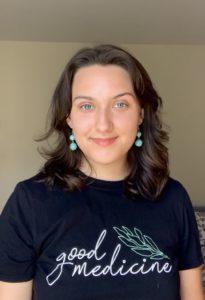 On September 8th, the Foundation Year Program (FYP) received an extraordinary gift: a lecture from Hereditary Chief on the Mi’kmaq Grand Council, Elder and Mi’kmaq scholar Stephen Augustine. It was an honor for King’s to host Chief Augustine as he taught a hall of FYP students about the Mi’kmaw Creation Story, and shed light on Mi’kmaw ways of knowing.
On September 8th, the Foundation Year Program (FYP) received an extraordinary gift: a lecture from Hereditary Chief on the Mi’kmaq Grand Council, Elder and Mi’kmaq scholar Stephen Augustine. It was an honor for King’s to host Chief Augustine as he taught a hall of FYP students about the Mi’kmaw Creation Story, and shed light on Mi’kmaw ways of knowing.
FYP is at the heart of King’s academic culture, a program taking first-year students through a chronology of the Western canon. Starting with some of the earliest recorded texts and moving towards the present day, FYP begins with The Epic of Gilgamesh and The Holy Bible. For the first time, this year’s first week of FYP included a creation story from the very land that the Halifax campus stands on: Mi’kma’ki.
Chief Augustine spoke with wisdom and warmth throughout his teaching. He was a genuine and often funny speaker, sending the room into laughter over and over. As I found my seat and did my best to masquerade myself as a young FYPer (in my fourth year), Chief Augustine welcomed us all to Mi’kma’ki.
The speaker brought us on a journey through the seven levels of Creation according to Mi’kmaw teaching. He began with Kisulk, the one who created everything. Then there is Niskam, Grandfather Sun, the one who puts spirit into all life. Thirdly, Wsitkamu, Mother Earth, who sustains all life.
In Mi’kmaw teachings, the first person to come into existence was Kluskap (“Glooscap”). This cultural hero was created with three lightning strikes. One strike created his eyes, ears, nose and mouth. Chief Augustine shared that this story guides how we smudge as Indigenous people today: we smudge our mouth to speak the good, our ears to hear the good, our nose to sense the good, and our eyes to see the good in others. We are taught that when we see, hear, sense and speak the good, others will do the same to us. Chief Augustine suggested that this belief was a reason that the Mi’kmaq welcomed Europeans.
Hereditary Chief Augustine told the story of Kluskap and Apistanu’j (the marten). It was a story of the marten giving up his life so Kluskap could feed himself and his family. Kluskap then gave thanks to Apistanu’j for his life, as well as to Kisulk, Grandfather Sun and Mother Earth. Chief Augustine taught that the Mi’kmaq “use ceremony to negotiate survival.” His storytelling illustrates the Mi’kmaw covenant relationship of respect with animals. I believe FYP students will carry this teaching with them when they learn about the ethics of human/non-human relations.
Fifth was the creation of Nukami, the grandmother, who was formed from rock and created already wise. Sixth was Netawansum, the nephew, and finally, Nikane’sqw, the mother.
Nikane’sqw came into the world as a strong woman and she teaches us how to depend on one another. Chief Augustine taught us that women in Mi’kmaw culture and storytelling are held in high regard for their wisdom. I believe FYP students will carry this teaching with them when they learn about Wollstonecraft, de Beauvoir, and other feminist thinkers. Centering this creation story teaches us that before the first colonizer could write his own name or tie his own shoes, the Mi’kmaq were being nourished and protected by the wisdom of women.
I completed FYP in 2021, where we studied a plethora of white, male and Christian authors, but I received little indication that Indigenous Peoples lived on Turtle Island until one Mohawk writer many months later in the year. Indigenous Peoples in North America only entered the story in the context of their colonization. Taking the program as an Indigenous student made me keenly aware of its narratives of Indigeneity, land relations and colonialism, even if none of my professors or classmates knew I had Inuit ancestry.
Including the Mi’kmaw Creation Story represents a meaningful expansion of the program’s knowledge and scope. I hope that learning the richness of Indigenous lifeways prevents students from having their Indigenous education confined to structural injustices. As these students go on to read dozens of authors in FYP and throughout their degree, whose writings, actions and worldviews justify or typify colonialism, they will already have insight into the magnitude of what we mean when we say “cultural genocide.”
It is an honor and a gift to have Hereditary Chief Stephen Augustine with us to share teachings on the history and cultural significance of the place we stand. As an audience member, I know that hearing these stories strengthened my sense of belonging and our collective responsibility to work towards good relations in Mi’kma’ki. Wela’lin.

